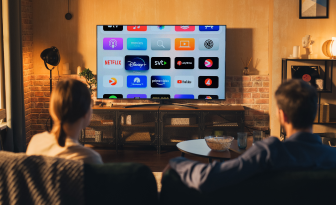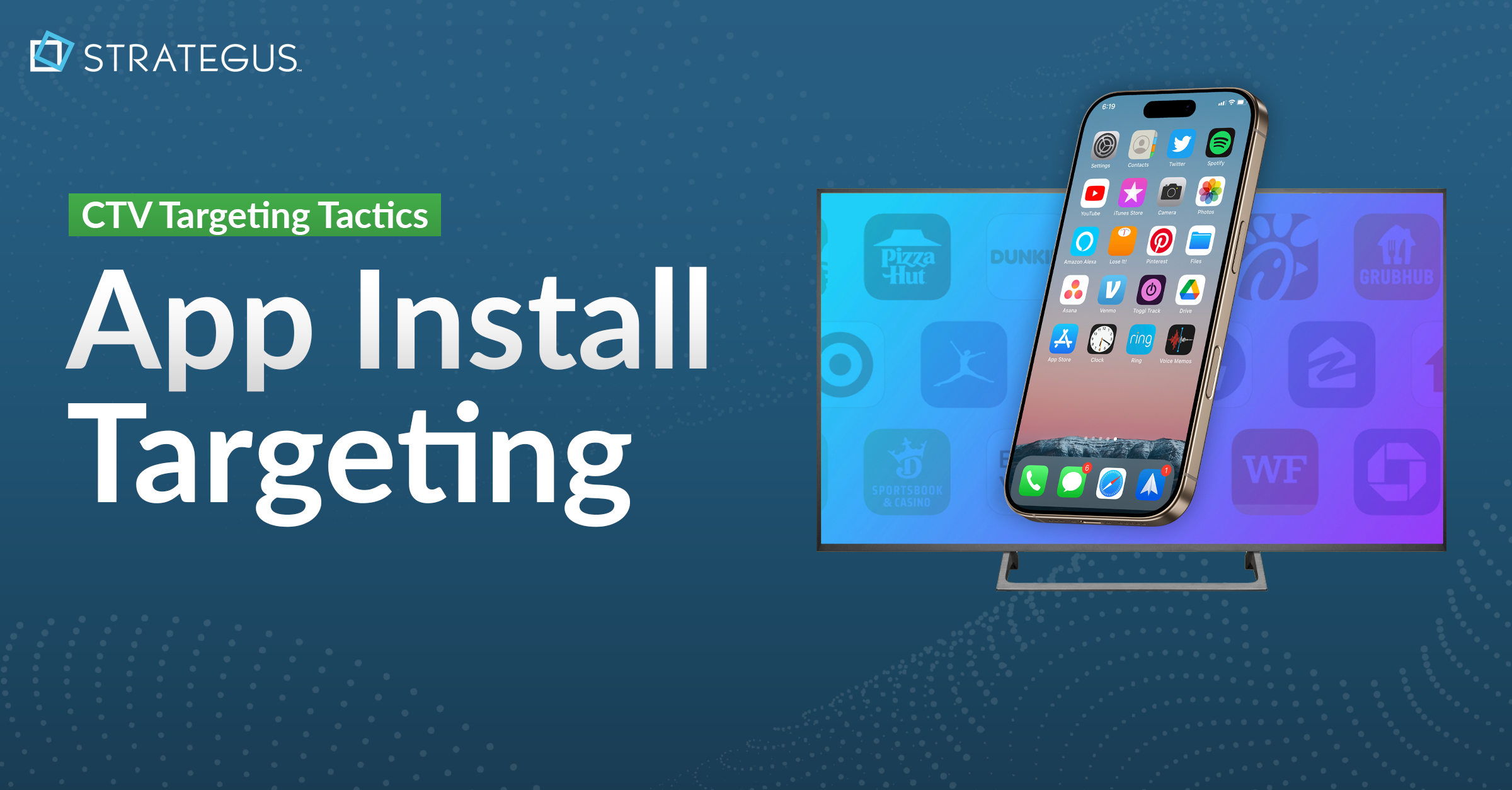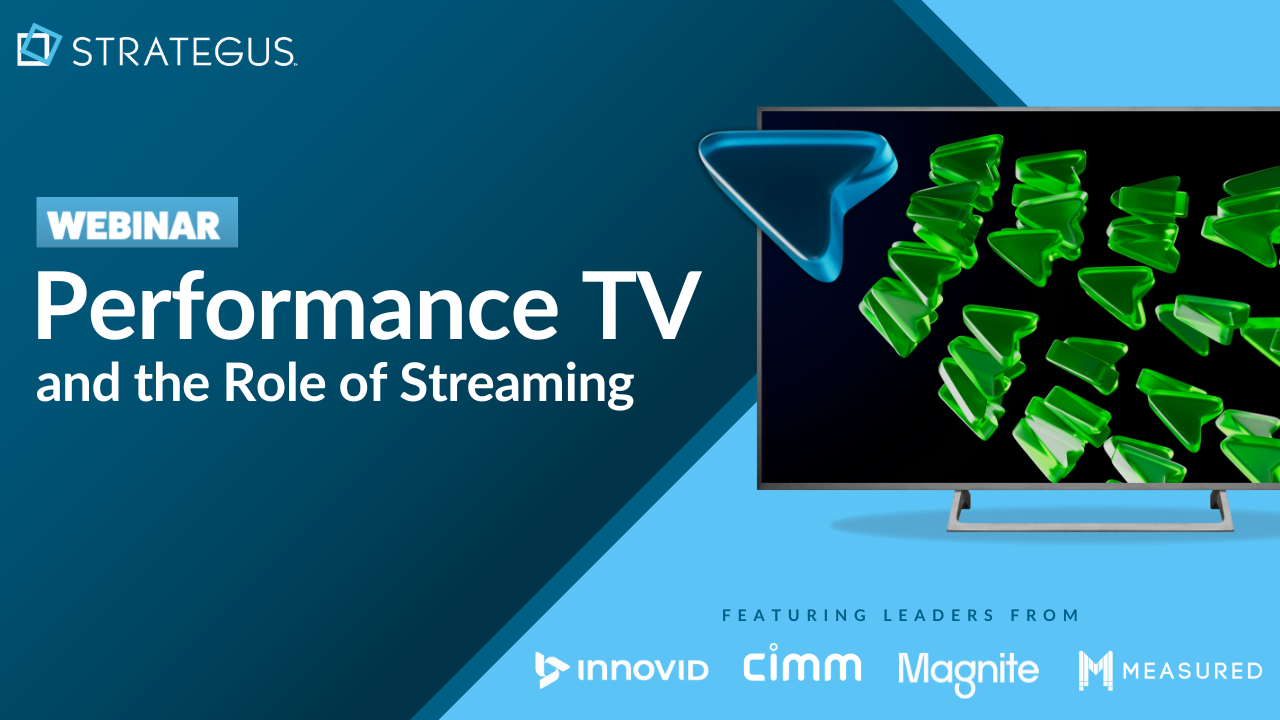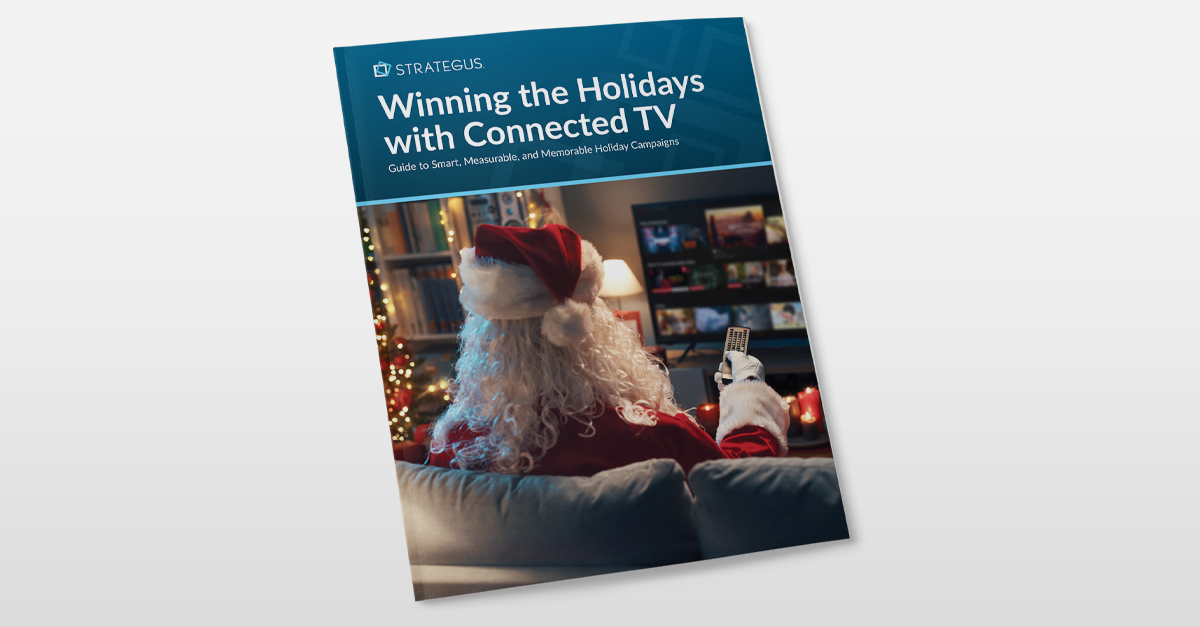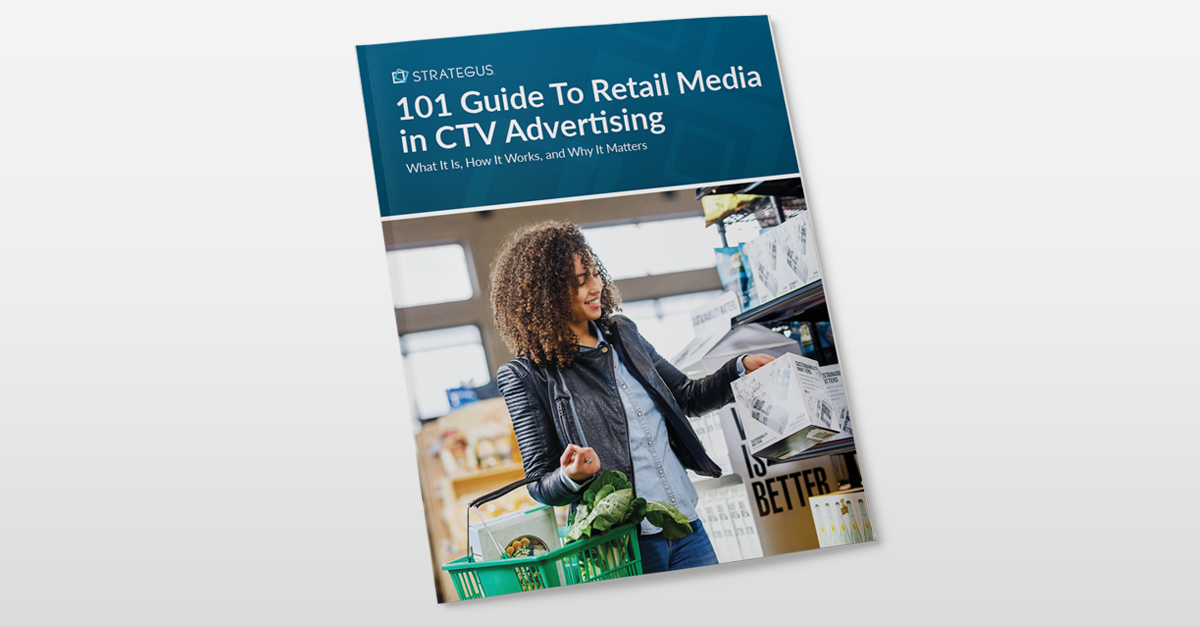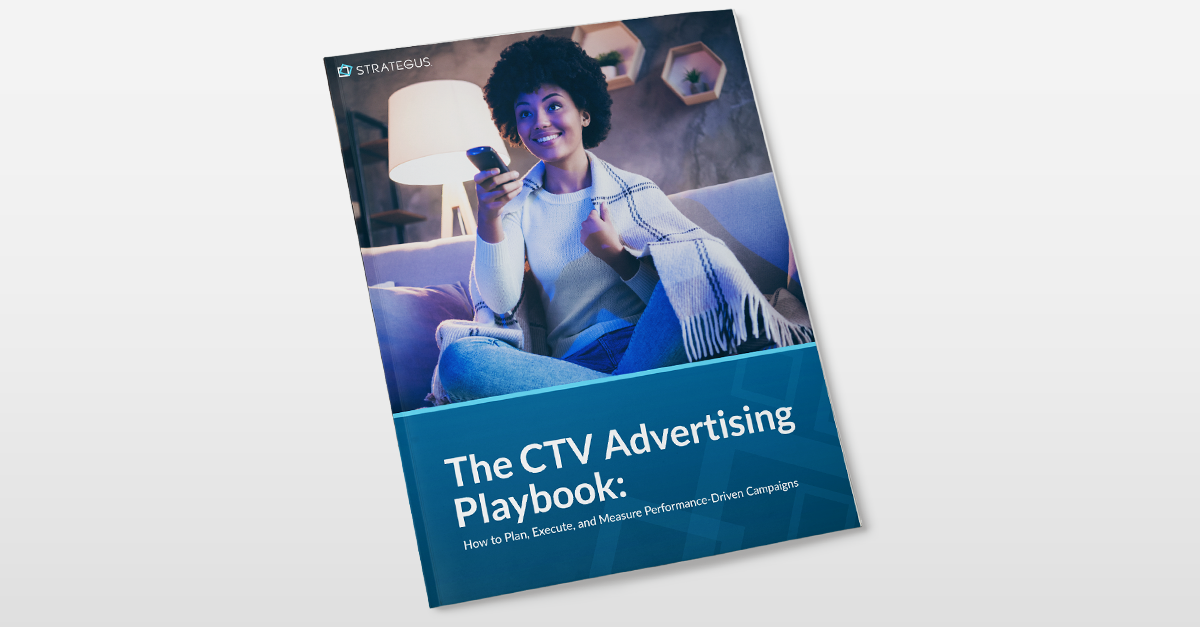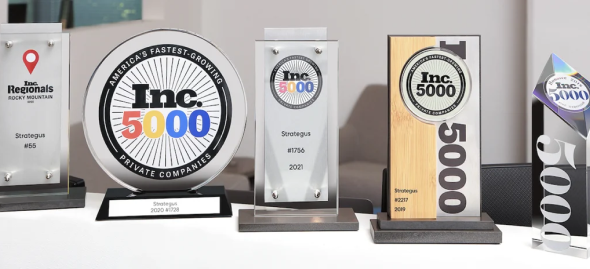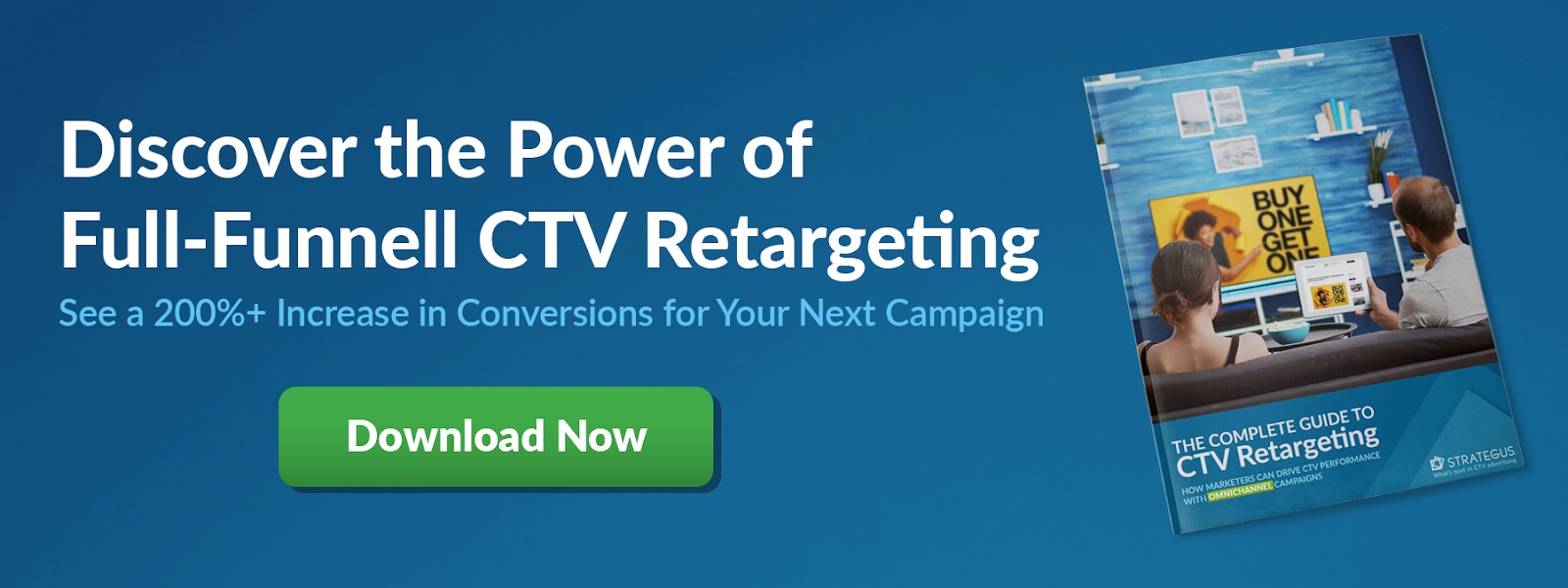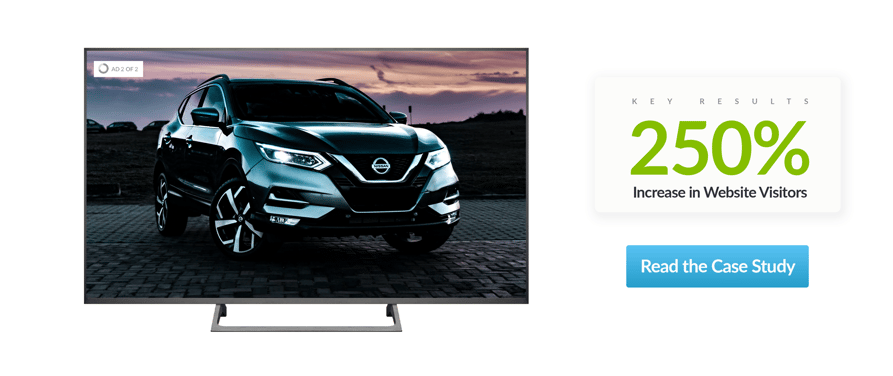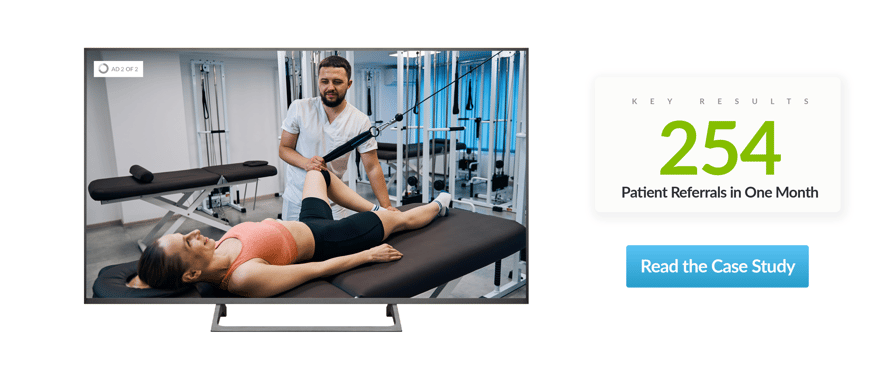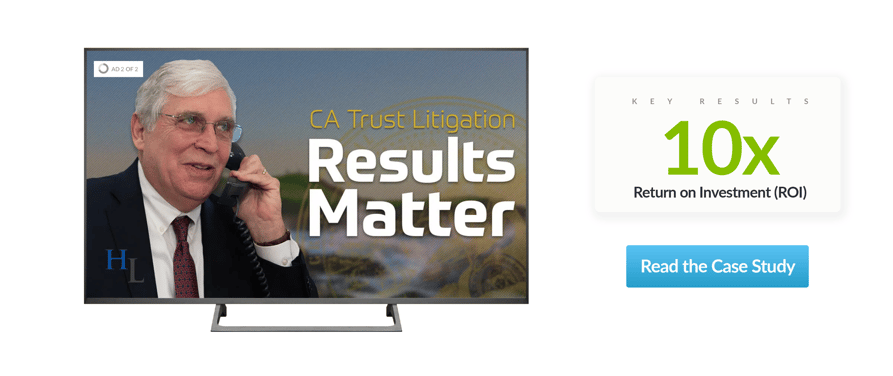- Home
- Strategus Blog
- What is OTT Advertising: How it Works, Benefits & Examples
What is OTT Advertising: How it Works, Benefits & Examples
 Traci Ruether
Traci Ruether
15 minutes read
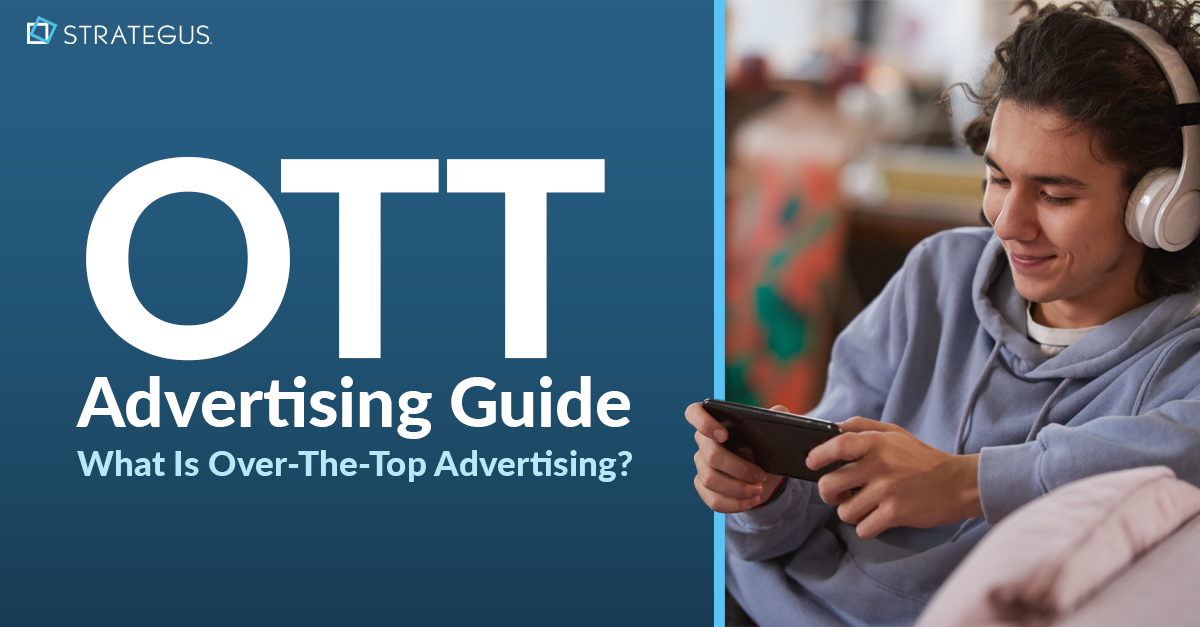
Ever feel like your ads are getting skipped, muted, or completely ignored?
As audiences are moving on to streaming, traditional ads just don’t cut it.
This guide explains what OTT advertising is, how it works, and why it’s the smarter way to reach today’s viewers (along with examples).
Key Takeaways
- Over-the-top (OTT) advertising delivers video ads via internet streaming platforms such as Netflix, Hulu, or Roku, bypassing traditional cable and satellite TV.
- OTT ads appear in formats like pre-roll, mid-roll, and static banners, and can be targeted by demographics, behaviors, interests, and location.
- Connected TV (CTV) is a subset of OTT, referring specifically to streaming content on smart TVs or connected devices like Roku or Fire TV Stick.
- OTT advertising uses programmatic buying and real-time bidding, enabling personalized campaigns, frequency capping, cross-device retargeting, and detailed attribution metrics.
- Speak to a Strategus expert today to learn how to launch smarter, full-funnel OTT advertising campaigns that deliver measurable results across devices and platforms.
What is OTT Advertising?
OTT advertising is the delivery of video ads through streaming platforms like Netflix, Hulu, or Roku, bypassing traditional cable TV.
It lets brands show ads to viewers watching content over the internet on connected TVs, phones, or tablets. These ads are often targeted by behavior, location, or interests, making them more efficient than regular TV ads.
It can be thought of as a next-generation format of traditional TV advertising.
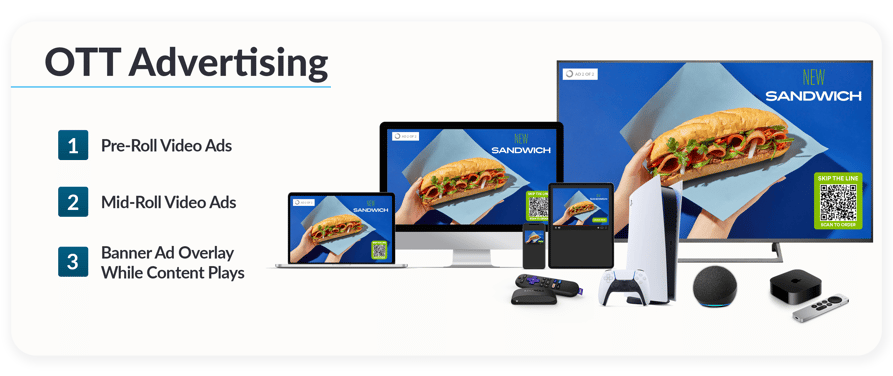
These can take a few different forms:
- Pre-roll video ads that play before the content starts.
- Mid-roll video ads that pop up in the middle of viewing.
- Banner ads that appear as a static graphic overlay on the content.
Most streaming platforms have adopted OTT advertising as a part of their monetization strategy today. Hybrid video-on-demand (HVOD) services like Amazon Prime offer ad-supported tiers with lower monthly fees, whereas free ad-supported streaming TV (FAST) services like Tubi rely entirely on advertising to generate revenue.
OTT ads can be understood as streaming TV ads. And because these are often placed programmatically, they offer several advantages over traditional TV advertising.
Let’s take a look at a few more acronyms that pop up when discussing streaming TV ads:
OTT vs. CTV Advertising
You’ve probably streamed content on a laptop or phone before. That’s OTT. OTT ads run on any internet-connected device, including smartphones, tablets, desktops, and more.
CTV advertising, on the other hand, is limited to streaming on connected big-screen TVs like Roku, Fire TV, or smart TVs. This makes CTV a premium subset of OTT. Still, many people use “OTT” and “CTV” interchangeably.
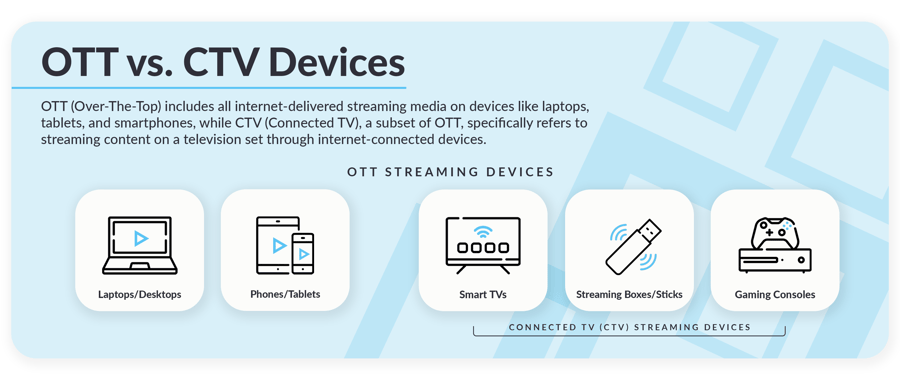
The important distinction between the two is:
- OTT refers to the delivery method (streaming video over the internet).
- CTV refers to the devices used to access OTT content (smart TVs, streaming devices, etc.).
OTT vs. VOD Advertising
OTT and VOD are often used interchangeably, but they mean different things.
OTT is the delivery method– video content streamed over the internet across devices like phones, tablets, and smart TVs. VOD, or video on demand, refers to the viewing experience where users choose what to watch and when, rather than following a set schedule.
Most VOD content today is delivered via OTT platforms, but not all OTT content is on-demand.
 The primary reason that these two are different is that all linear and live content such as live sports streaming and scheduled TV channels on Hulu+ LiveTV or Tubi falls outside of the world of VOD.
The primary reason that these two are different is that all linear and live content such as live sports streaming and scheduled TV channels on Hulu+ LiveTV or Tubi falls outside of the world of VOD.
Why? This type of content will play whether the user initiates it or not, and is never “on demand.”
How Does OTT Advertising Work?
OTT advertising operates on a fundamentally different level than traditional TV commercials. While your old cable ads played to whoever happened to be watching, OTT serves specific ads to specific households based on actual viewing data and digital footprints. It's precision targeting meets premium content, a combination that's changing how brands think about video advertising.
The technical infrastructure behind OTT is what makes this precision possible. Every streaming session generates data points that advertisers can use: what device you're using, your viewing history, even your shopping behavior if you're logged into a retail app.
This data flows through a complex ecosystem of platforms and exchanges in milliseconds, determining which ad you'll see next. For marketers, this means the wasteful spray-and-pray approach of linear TV is finally obsolete.
Here's how the entire OTT advertising process works from campaign setup to delivery:
- Platform Selection & Integration: Choose between publisher direct deals (Hulu, Paramount+) or programmatic platforms for broader reach. Set up campaign parameters including budget, flight dates, and KPIs. Integrate measurement partners for attribution and brand lift studies.
- Audience Building & Targeting: Upload first-party CRM data for custom audience matching. Layer demographic, behavioral, and contextual targeting parameters. Create lookalike audiences based on your best customers' profiles.
- Real-Time Bidding Process: The streaming platform detects an ad opportunity and sends bid requests with anonymized viewer data. Your DSP evaluates the opportunity against campaign criteria in under 100 milliseconds. Winning bids trigger immediate ad delivery to the viewer's device.
- Dynamic Ad Insertion: Server-side ad insertion (SSAI) stitches ads directly into the content stream. Client-side insertion delivers ads from the viewer's device for more targeting flexibility. Ads are formatted automatically for each screen size and resolution.
- Performance Optimization: Track completion rates, brand lift, and cross-device conversions in real-time. Adjust targeting and creative based on performance data.
Benefits of Programmatic OTT Advertising
With traditional TV ads, you pay upfront hoping the right people are watching, but there’s no guarantee.
Programmatic CTV changes that. Ads are bought through automated auctions and shown to specific audiences, not just whoever happens to be watching a show. This makes your ad spend more efficient and helps you reach the right people at the right time.
Here are the main advantages of programmatic advertising:
1. Precise Targeting and Localization
Programmatic OTT allows advertisers to only reach their desired audience and thereby eliminate wasteful ad impressions served to the wrong viewers. This is done by layering first- and third-party data sources to build custom audiences.
Some of the parameters that can be used to target OTT viewers include:
- Significant life event indicators such as a recent move, graduation, or family events like welcoming a new baby.
- In-market signs like house renovations, seasonal conditions, and buying interest signals.
- Activities and interests such as being an outdoor enthusiast, avid gardener, or luxury traveler.
- Location-based targeting ranging from geofencing at the zip code level to conquesting foot traffic from competitor stores.
2. Campaign Personalization
Precise targeting lays the groundwork for ensuring a more relevant viewing experience with tailored campaigns.
This is because the programmatic nature of CTV helps marketers craft personalized campaigns by adapting ad creatives to individual audience segments.
Let's take an example of an auto dealership. It could segment its audience based on lifestyle components and customize the creative accordingly.
For new mothers requiring a spacious enough vehicle to fit a car seat, a dealership might opt to promote their Toyota Highlanders. Meanwhile, they could run ads for their Corollas to lower-earning individuals who’d been researching sedans.
The result? The right message to the right buyer at the right time.
Learn more about CTV best practices →
3. Ad Frequency Capping
After irrelevance, one of the biggest complaints from end users watching ad-supported content is the frequency of a given ad. Nobody wants to see the same ad on repeat throughout a single program, which is where frequency capping comes into play.
Frequency capping is the ability to limit the total number of times a viewer is exposed to a particular advertisement.
For this, you’ll want to confirm that your CTV ad partner offers frequency capping and other tactics to prevent ad fatigue.
4. Omnichannel Retargeting
Because OTT ads run in digital environments, advertisers can re-engage the same users on other devices through cross-device retargeting.
For instance, a brand might initially reach a viewer on their smart TV, and then follow up with additional touchpoints via online video ads on YouTube, streaming audio ads on Spotify, and social media ads on Instagram.
This type of full-funnel advertising isn’t super common, but it’s a core part of how we approach OTT/CTV advertising at Strategus.
5. Real-Time Measurement and Multi-Touch Attribution
Advertisers need to see how many people saw an ad, how long they watched it, and what actions they took after watching it. While this level of information isn’t possible when advertising on traditional TV, it is with OTT, especially when brands work with a partner like Strategus.
This type of reporting doesn’t just enable advertisers to better understand campaign performance, it also provides the data required to optimize and refine OTT efforts.
Here are some of the attribution points and KPIs you should demand from your OTT provider:
- Brand Lift: Gain information on how campaign exposure influences awareness, attitudes, and opinions about your company
- Revenue: Rely on a revenue tracking pixel to understand the revenue from online purchases generated by your campaign.
- Geoperformance: Compare performance across different regions to determine which locations warrant additional investment.
- Return on Ad Spend (ROAS): Compare ROAS across different campaigns to determine which tactics are more successful and optimize accordingly
- Conversion Rate: Measure the percentage of users who complete a desired action following ad exposure, whether that’s making an online purchase, visiting a brick-and-mortar location, or filling out a form. These actions should be tied directly to attribution capabilities to paint the full picture.
 Types of OTT Platforms
Types of OTT Platforms
The OTT model has grown into a versatile ecosystem that caters to every viewing preference and price point.
Many services like YouTube TV and Tubi blur the lines between traditional TV and streaming, with their linear channels alongside on-demand libraries. What’s more, free OTT platforms like the Roku Channel deliver linear content to viewers without even requiring a login.
Here’s a look at the different types of OTT platforms.
1. Subscription-Based Video on Demand (SVOD)
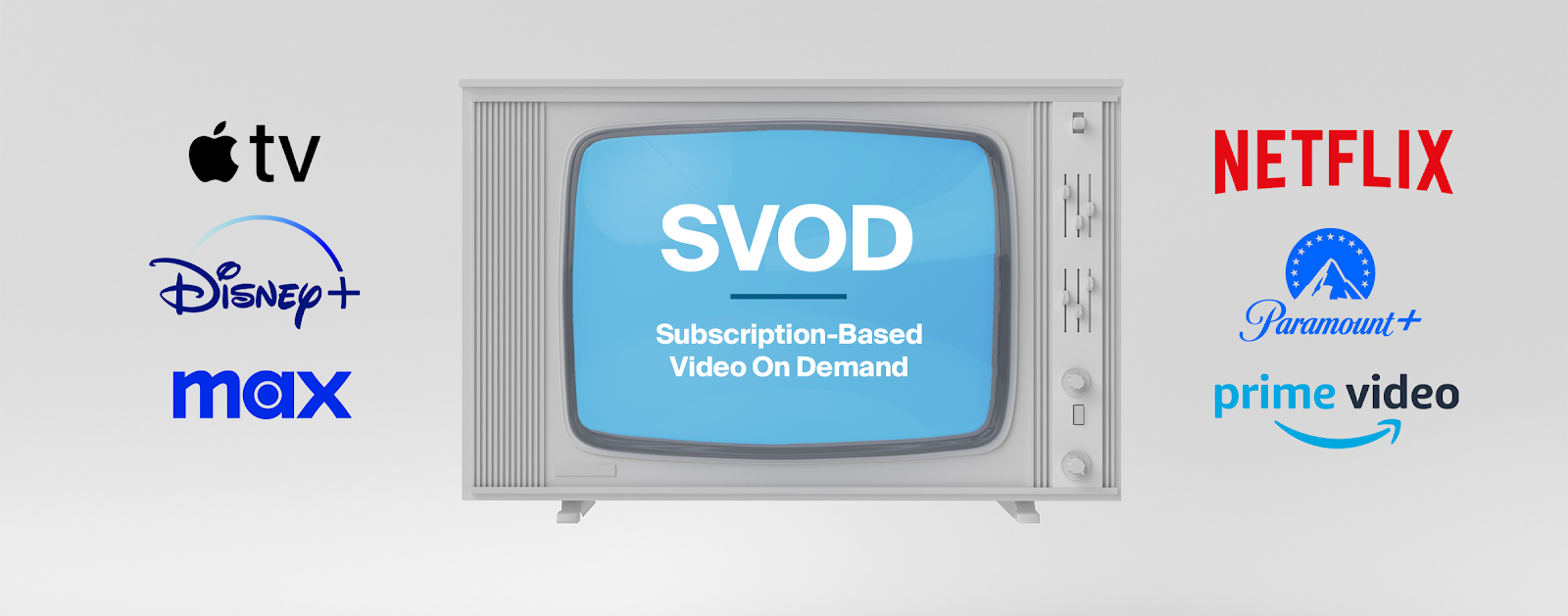
SVOD describes streaming services where users enter a subscription agreement and are charged recurring fees. In return, the user can watch video content without any limits.
SVOD is similar to traditional cable TV packages, allowing subscribers to consume content at a monthly flat rate. With pure-play SVOD, viewers get ad-free content for a premium rate.
Popular SVOD platforms include:
- Apple TV
- Disney+
- HBO's Max
- Netflix
- Paramount+
- Amazon Prime Video
2. Advertising-Based Video on Demand (AVOD)

AVOD services rely on commercials and other advertising techniques to generate revenue. These services are free to consumers. However, viewers must sit through advertisements to access the content.
These services enable viewers to access more on-demand content for a lower overall price when compared to SVOD.
Popular AVOD platforms include:
- Crackle
- Plex
- PlutoTV
- Samsung TV Plus
- Tubi
- Vudu
- YouTube
3. Transactional Video on Demand (TVOD)

With TVOD, users can purchase specific video content on a pay-per-view basis. This model offers viewers a set period of time (usually 24 hours) to watch ad-free premium content or one-time live events.
An easy way to think about TVOD is as a digital Blockbuster. Viewers can either rent or buy each movie or TV show.
Popular TVOD platforms include:
- Amazon Prime Video
- Google Play Movies
- iTunes
- YouTube
4. Hybrid Video on Demand (HVOD)
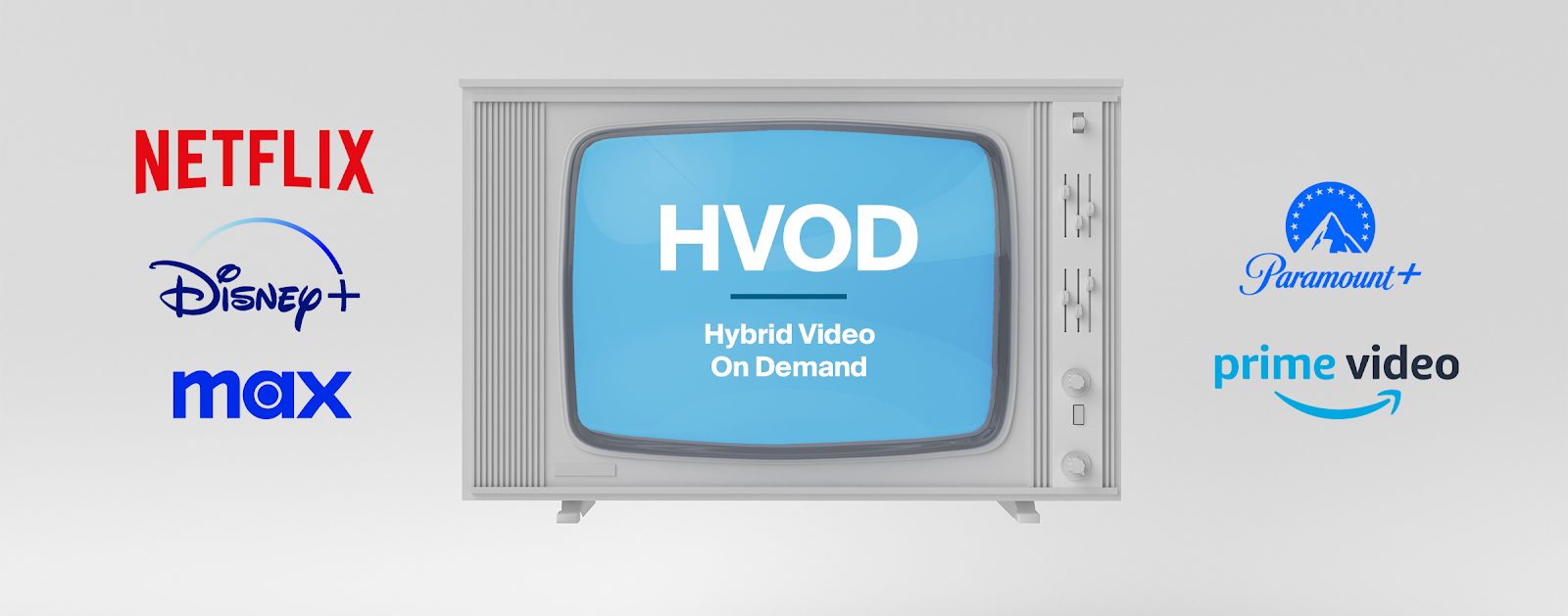
The latest OTT monetization model, HVOD, employs a mix of the monetization tactics detailed above, often with ad-supported content for a lower price than SVOD.
In addition, HVOD services will include TVOD content, providing customers with multiple ways to enjoy the video content they want at an affordable price.
Popular HVOD platforms include:
- Netflix
- Amazon Prime
- Disney+
- HBO Max
- Paramount+
5. Free Ad-Supported TV (FAST)

For viewers looking to do away with paid subscriptions altogether, FAST apps make it easy. These streaming services deliver linear channels at no cost to viewers, playing everything from reruns, old movies, platform-specific content, and local news.
Many smart TVs (like Roku) have default FAST apps (like the Roku Channel) within the interface, giving viewers a free and easy option for lean-back viewing out of the box.
Here are some popular FAST platforms:
- Pluto TV
- Tubi
- The Roku Channel
- Xumo
6. Virtual Multichannel Video Programming Distributors (vMVPDs)

vMVPD services deliver linear TV channels (with ads) to paying subscribers. Households looking to cut the cord without losing access to premium live sports content and must-watch shows from popular cable networks are the target market for these services.
Popular vMVPD platforms include:
- YouTube TV
- Hulu Live
- Sling TV
- FuboTV
- Philo
- DirecTV Stream
OTT Advertising Case Studies Across Different Industries
Now that we've established the importance of OTT and its various applications, let's talk about some concrete examples of how brands across industries partnered with Strategus to use OTT advertising to reach their target audiences.
1. Automotive OTT Advertising
A Southern California Nissan dealership partnered with Strategus to boost showroom visits and sales through Connected TV advertising. The campaign achieved a remarkable 250% increase in website visitors, demonstrating the power of OTT in automotive marketing.
Strategus employed a full-funnel strategy, starting with CTV ads to build upper-funnel brand awareness on large screens, followed by cross-device retargeting using Encore Omnichannel to serve display ads to the same audience on other devices. This comprehensive approach proved that targeted streaming ads can directly influence offline purchasing decisions, helping local dealerships compete effectively against larger advertising budgets.
2. Healthcare OTT Advertising
A regional physical rehabilitation center turned to Strategus to overcome traditional marketing limitations and reach potential patients more effectively. The campaign was designed to target physicians and their support staff to drive patients to this particular rehab center, pulling audiences based on occupation to deliver relevant advertising to specialists who make physical therapy referrals.
After two months, Strategus surpassed the client's monthly referral goal, with video completion rates demonstrating accurate audience targeting and ultimately bringing more patient referrals to the client's rehabilitation center. This targeted OTT strategy proved particularly valuable during a historically low period, showcasing how precise healthcare marketing can drive measurable patient acquisition.
3. Law OTT Advertising
Hackard Law, a trust and estate litigation firm, enlisted Strategus to stand out in the competitive legal market. In the first 8 months of the campaign, Strategus drove 1,978 clicks on Hackard Law's phone number listed on their website, resulting in 3 new confirmed cases for the firm, potentially yielding a 10x return on investment.
By utilizing Strategus' household-level targeting capabilities and strategic frequency capping, the firm efficiently reached potential clients across California. In Mark Hackard's own words: "Strategus is a pioneer in developing and delivering programmatic Connected TV…and Strategus has been a strategic partner for us. We've been successful in our Strategus-led campaigns, and we plan many more."
Closing Thoughts — Launch Smarter OTT Campaigns With Strategus
At Strategus, we don’t just place your ads. We build full-funnel strategies that deliver results. From big-screen exposure to cross-device retargeting, we bring everything under one roof.
Here’s what you get with Strategus:
- Advanced audience targeting based on behavior, location, and intent
- Non-skippable premium inventory across top CTV platforms
- Cross-device retargeting to keep your brand top of mind
- Real-time attribution dashboards to track ROI 24/7
- Expert-managed service so you never have to go it alone
Looking to do OTT advertising the right way? Speak to a Strategus expert to learn more today.
OTT Advertising FAQs
1. What’s the Difference Between CTV and OTT Advertising?
While connected TV (CTV) refers to the smart TVs used to stream content, over the top (OTT) refers to the way that content is delivered over the internet. These terms are often used interchangeably, but the main distinction comes down to how this content is consumed.
With CTV advertising, marketers gain access to premium ad spaces on the big-screen TV. OTT, on the other hand, refers to all multimedia content streamed to every device, including TikTok videos viewed on smartphones, YouTube clips on laptops, and more.
2. What is a CTV Device?
A CTV (Connected TV) device is any television that connects to the internet to stream video content. This includes smart TVs with built-in apps like Netflix or Hulu, as well as devices like Roku, Amazon Fire Stick, Apple TV, or gaming consoles like Xbox and PlayStation. These devices allow users to watch content over the internet instead of traditional cable or satellite.
3. What is a Cord Cutter?
Cord cutters are TV viewers who cut ties with expensive cable and satellite services in favor of flexible streaming apps like Netflix, YouTube TV, and Tubi. This term will soon describe the majority of households.
4. How Does OTT Advertising Work?
OTT advertising often uses programmatic media buying to automate ad placements. This allows marketers to pinpoint their ideal buyers rather than taking the spray-and-pray approach of traditional TV advertising by targeting individual viewers based on their interests, browsing activity, lifestyle choices, and more.
5. What KPIs are Used to Measure CTV Advertising?
Key CTV advertising KPIs include video completion rate (VCR), click-through rate, conversion rate, ROAS, and geoperformance. To connect ad impressions to revenue, marketers need advanced attribution tools. It’s smart to partner with a provider like Strategus, which offers customizable attribution solutions and real-time reporting to track and optimize performance throughout the campaign.
6. What Types of Creative Are Needed for OTT Advertising Campaigns?
According to Nielsen, the visual, textual, and auditory components of OTT ads are the most impactful drivers of sales. For this reason, the most successful CTV ads tend to be more personalized. OTT ads also tend to employ more direct-response tactics by using a clear call-to-action.

Traci Ruether is a content marketing consultant specializing in video tech. With over a decade of experience leading content strategy, she takes a metrics-driven approach to storytelling that drives traffic to her clients' websites. Follow her on LinkedIn at linkedin.com/in/traci-ruether or learn more at traciruether.com.
Strategus is a managed services connected TV(CTV) advertising agency with over 60,000+ campaigns delivered. Find out how our experts can extend your team and drive the result that matter most.
Talk to an Expert
Table of Contents
Seeking a Custom CTV Strategy That Delivers?
What to read next
App Event Tracking: Tie Mobile App Activity to CTV Campaigns
Let’s say you’re running a CTV campaign for a personal finance app.
5 minutes read

Stop Guessing Who Your Audience Is — Let Their Apps Tell You
Connected TV (CTV) targeting often falls in one of two camps.
8 minutes read
See Who Bought After Your Ad + How Much They Spent
You can’t improve what you can’t measure. And for years, that’s been a major problem with TV advertising.
4 minutes read
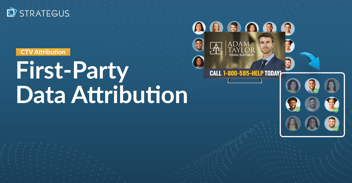
First-Party Attribution: Match Ads to Sales With CRM Data
The value of first-party data continues to grow.
7 minutes read

